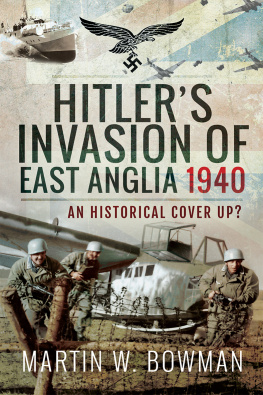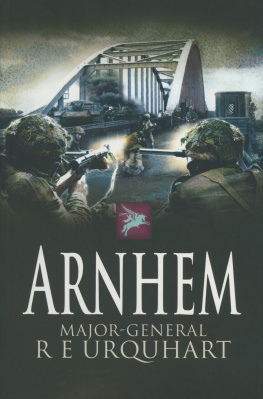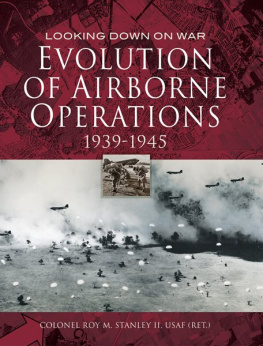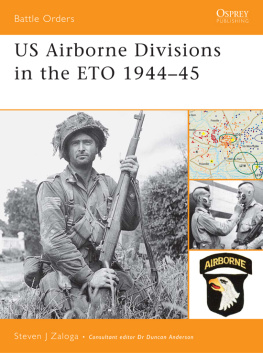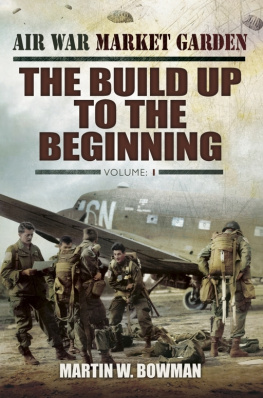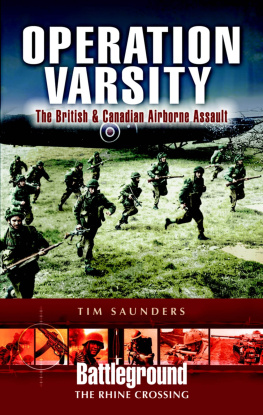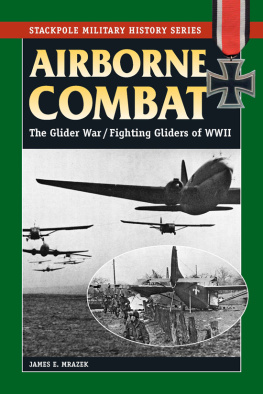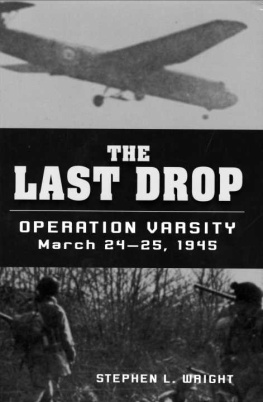Air War Varsity
Martin W. Bowman
First Published in Great Britain in 2017 by
Pen & Sword Aviation
an imprint of
Pen & Sword Books Ltd
47 Church Street, Barnsley, South Yorkshire S70 2AS
Copyright Pen & Sword Books 2017
ISBN 9781473863101
eISBN 9781473863125
Mobi ISBN 9781473863118
The right of Martin W Bowman to be identified as author of this work has been asserted by him in accordance with the Copyright, Designs and Patents Act 1988.
A CIP catalogue record for this book is available from the British Library.
All rights reserved. No part of this book may be reproduced or transmitted in any form or by any means, electronic or mechanical including photocopying, recording or by any information storage and retrieval system, without permission from the Publisher in writing.
Pen & Sword Books Ltd incorporates the Imprints of Pen & Sword Aviation, Pen & Sword Family History, Pen & Sword Maritime, Pen & Sword Military, Pen & Sword Discovery, Wharncliffe Local History, Wharncliffe True Crime, Wharncliffe Transport, Pen & Sword Select, Pen & Sword Military Classics, Leo Cooper, The Praetorian Press, Remember When, Seaforth Publishing and Frontline Publishing.
For a complete list of Pen & Sword titles please contact
PEN & SWORD BOOKS LIMITED
47 Church Street, Barnsley, South Yorkshire, S70 2AS, England
E-mail:
Website: www.pen-and-sword.co.uk
Contents
Prologue
We were packed in the back of the Horsa like sardines in a tin and as usual the armchair experts who had told us it would be basically an unopposed landing couldnt have got it more wrong. Jerry may have been bombed, rocketed and shelled, but he was far from finished and he was throwing everything at us bar the kitchen sink. The glider was shaking as the flak exploded nearby and bits of shrapnel cut through the outer skin like a knife through butter. The moment we cast off, the pilot dropped the nose down so much I thought we were going to roll on to our back. And he held it there until the very last moment, when he applied the huge wing flaps, lifted the nose and we hit the ground with an almighty bang and skidded along, bouncing and spinning out of control. Except for the flaps, once youre on the ground where you go is pure luck. We hit something big and spun around and there was a great tearing sound as part of the port wing got ripped off. I thought this is it, were done for, when suddenly we came to an instant jarring halt and the whole fuselage lifted up to a forty-five-degree angle before smashing down onto the ground. Bodies went everywhere and there was pandemonium as the lads picked each other up, swore and cursed the pilot and pulled mates from under the scattered debris. The platoon commander took charge and we all scrambled around for our weapons and kit, slashed open the sides of the Horsa and jumped out.
Miraculously, there were no serious injuries, just shock, cuts, severe bruising and a couple of the lads with broken arms. Everyone thought the crew must have been killed, but they too walked away with only minor cuts and bruising. A miracle had happened right there in the middle of a battlefield. We were lucky as the Jerries werent bothered with us as they had enough targets to keep them happy already. As we got ready to move off, the senior pilot, a RAF flying officer with the typical handlebar moustache, shouted out in plum-like tones, I say chaps that that was jolly good fun, wasnt it. Anyone want to try it again when all this vulgar violence business is over with?
The Flying Brick by Billy Griffin Quoted in Paras: Voices of the British Airborne Forces in the Second World War by Roger Payne OAM
(Amberley 2014 and 2016).
Preface
Before embarking on Operation Varsity it is well to consider for a moment, the implications resulting from previous full-scale airborne operations, notably D-Day, 6 June 1944 and in particular, Operation Market-Garden in September that same year, both of which greatly influenced the decisions taken during planning for Varsity-Plunder.
The interval of three months between Operations Neptune/Overlord-the successful invasion of Normandy on 6 June 1944 and Market-Garden, the next airborne operation in the European Theatre, in mid-September that same year, was marked by important organizational changes and by unprecedented fluctuations in the extent and character of troop carrier utilization. The principal change was the creation of First Allied Airborne Army. Even before Neptune was launched the British, who had set up a command known as Headquarters Airborne Troops for their own airborne in 1943, had recommended the establishment of a headquarters to command all Allied airborne units in the Theatre. This was not necessary in Normandy because British and American airborne operations there were separate. However, future operations involving several airborne divisions of different nationalities might need central control. The British intimated that their existing airborne headquarters might well provide a commander and cadre for the one proposed.
On 20 June 1944 General Dwight D. Eisenhower who had commanded the Allied forces in the Mediterranean theatre ever since their first landings in North Africa and on 5 December 1943 was chosen as the Supreme Commander of the Allied Expeditionary Force (SCAEF), approved the idea of a unified command for the airborne troops, but coupled with his approval a more sweeping proposal for a command which would control troop carriers as well. The British felt strongly that their airborne commander, General Frederick Arthur Montague Boy Browning, should be chosen to head the new command. The Americans thought it proper to name an American, since they were contributing most of the troop carrier forces and a majority of the airborne. On 16 July Eisenhowers final choice fell on 53-year old Major General Lewis Hyde Brereton. American tactical air units in England had been organized into the Ninth Air Force under his command on 16 October 1943. Born in Pittsburgh in 1890 Brereton was a 1911 graduate of the Naval Academy and began his military career as an Army officer in the Coast Artillery Corps prior to World War I and then spent the remainder of his service as a career airman, overcoming a disastrous beginning, restoring his reputation and commanding air forces in a wide variety of combat activities in four theatres of operations. Although junior to Browning by a few months (he was made lieutenant general in April 1944; Browning had held the rank since December 1943), he had a length and variety of service unsurpassed in the AAF, had commanded air forces in the Far East, North Africa and England and as commander of the Ninth Air Force had acquired a working knowledge of IX Troop Carrier Command. On 4 August 1944 he accepted Lieutenant General Browning as his deputy commander.
Airborne Army exercised command of the British airborne troops through Headquarters, Airborne Troops (subsequently re-designated 1st Airborne Corps) under Browning and command of the American airborne through XVIII Airborne Corps, a new headquarters under the command of 50-year old Major General Matthew Bunker Ridgway. Born 3 March 1895 at Fort Monroe, Virginia, he had graduated in 1912 from English High School in Boston and applied to West Point because he thought that would please his father (who was a West Point graduate). Ridgway helped plan the airborne element of the invasion of Sicily in July 1943 and led the 82nd Airborne Division into battle. This was the first major airborne operation in US history, and his men took heavy losses.


